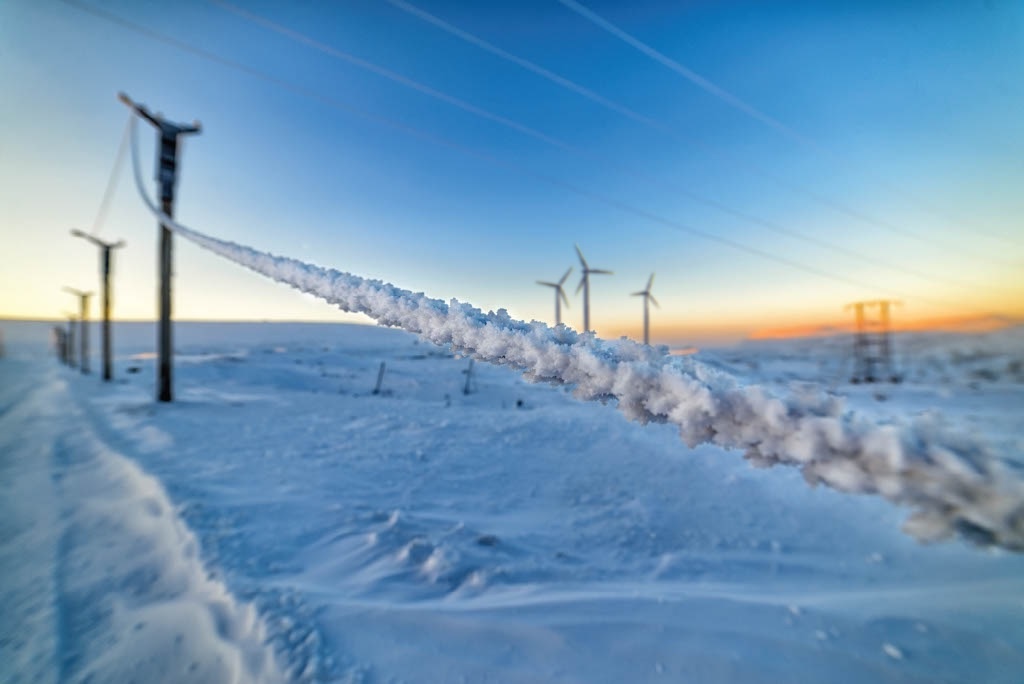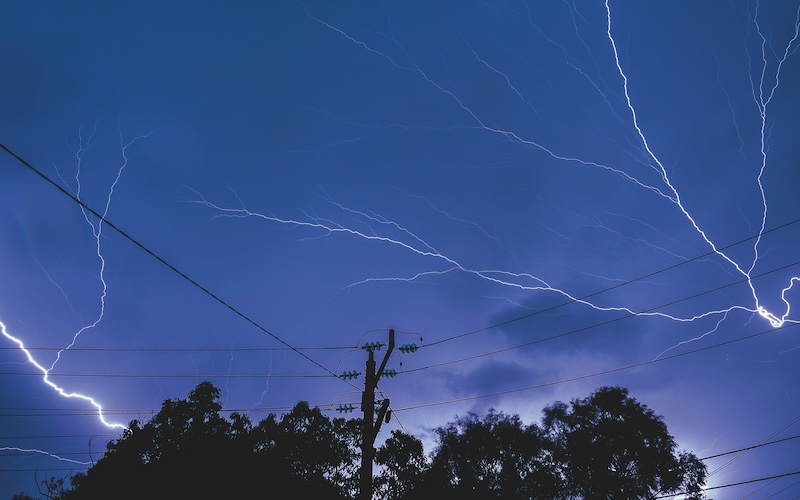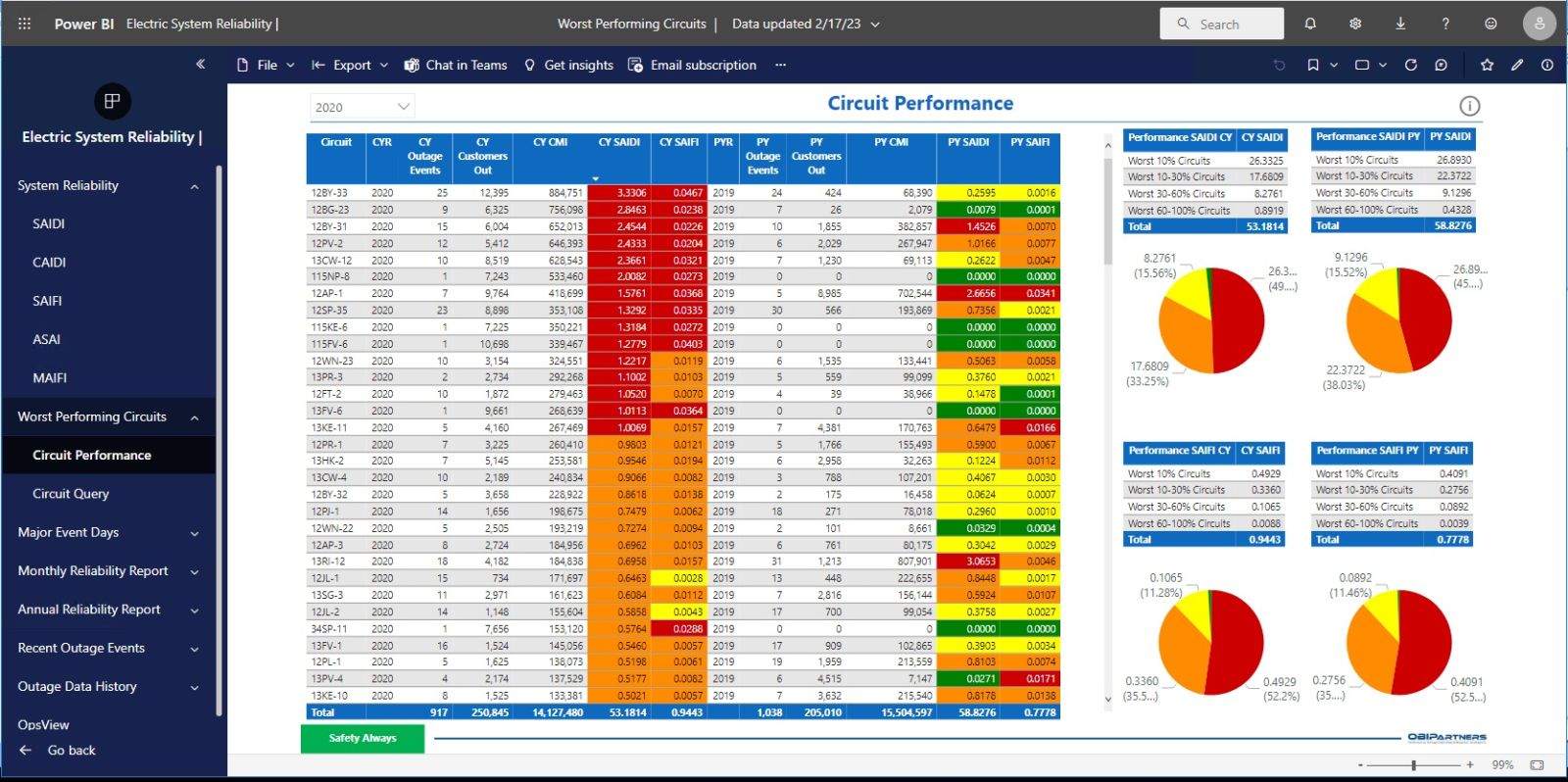Protecting Our Grid Lines
In an era marked by increasingly severe weather from Mother Nature, utilities face mounting pressure to enhance the resiliency and reliability of their power delivery systems. While icing of the wind turbine blades has been discussed extensively, the physical means of distributing that energy has been addressed far less. Just as wind farms components are adopting the latest technologies to modernize their fleets and extend life expectancy, utilities need to adopt strategies to modernize their transmission and distribution grid. As climate change intensifies the frequency and severity of weather events, it becomes even more important for power providers to invest in advanced technologies and best practices that not only protect infrastructure, but also improve overall grid performance.

Defend against wildfires
The most successful wildfire mitigation solution for high-fire-risk areas is the conversion of overhead lines to below-grade systems. There have been more intense wildfires and brush fires due to drought and high wind conditions that are challenging to prevent. If undergrounding is not possible due to time, budget, or right-of-way, then bare overhead lines can be upgraded with tree wires (also known as covered conductors) to minimize arcing in extreme dry seasons. The 3-phase bare conductors can potentially collide with one another during windy conditions, which can trigger sparks. Replacing bare wires with covered conductors not only lessens the burden of vegetation management but also reduces the fire risk.
Delay corrosion
Copper is naturally more corrosion-resistant than aluminum and steel, which are commonly used on overhead lines. A best practice in coastal areas, where weight is not a major concern, is to utilize hard-drawn copper wire as an overhead distribution conductor. Copper service drop cables rated 600V have been proven successfully to delay the conductor’s corrosion. Metallic oxidation and corrosion can occur both above and underground, and there are methods to impede corrosion below grade, which are difficult to inspect. Replacement of corrosive native soil with an engineered backfill is a great option for direct buried systems. Improvement of local drainage is also essential as it diverts water around the exposed wires and lowers the concentration of the contaminated water.

Protect exposed wires
Protected Ground Wire (PGW), Covered Line Wire, and Covered Riser Wires are specified for applications where protection from momentary contact with wildlife is needed. Bare copper conductors are extruded with either a thermoplastic polyethylene (PE) or a thermoset crosslinked polyethylene (XLPE) layer to protect the copper conductor. Because the metallic appearance is concealed by a black polymeric covering, it also deters vandalism and copper theft.
Convert overhead lines
Electric utilities have proactively transitioned overhead lines to underground circuits to boost reliability simply because the below-grade systems are less exposed to the weather and other environmental elements compared to the overhead lines. Approximately 80 percent of power outages occur in distribution systems above ground. For example, 15kV distribution conductors made of ACSR can be directly buried by converting to a 15kV primary aluminum MV cable with a TRXLPE insulation, copper concentric neutrals, and an overall LLDPE jacket, which has become the preferred method for replacing old overhead lines.
Defend against moisture
Water intrusion is one of the primary causes of cable system failures. Moisture accelerates the dielectric breakdown of insulation and triggers metallic corrosion. Corrosion-resistant designs such as solid conductors over stranded wires and copper tinning over uncoated counterparts have proven to be effective. A strand fill compound to water-block the conductor is frequently specified for underground MV cables. Water-swellable powder can be applied over shielding wires and under the jacket to absorb and retain moisture, which hinders the water penetration between the layers of jacketing and shielding wires along the installed cable.
Lower electrical stress
The cable insulation level is dictated by how fast the protective equipment can de-energize the circuit in case of a fault. If a fault can be cleared within 60 seconds, then 100 percent insulation is sufficient. However, if a fault sustains beyond 1 minute, but less than 1 hour, then a 133 percent insulation design is required. A thicker insulation is recommended for systems prone to electrical surges. For instance, a 25kV 1/0 AWG cable insulated with a 133 percent wall yields a 15 percent reduction in electrical stress at the conductor shield and insulation interface compared to one with only 100 percent insulation. Additionally, lowering electrical stress by using heavier insulation can extend cable life.

Withstand short circuits
The outer insulation shielding for many primary MV cables contains “one-third” neutrals relative to phase conductor size when used for a 3-phase supply, or "full-size" neutrals for a single-phase system. With modern rapid-switching equipment at substations, available short circuit current and duration are reduced compared to decades ago. Using a reduced neutral rating ranging from 1/4, 1/6, to 1/12 saves material cost upfront but can pose significant risks due to an insufficient short circuit capacity.
Assess grid resilience
Digital grid resiliency assessments identify areas for improvement by leveraging your outage and GIS data. Similar to how enhanced data saves wind and other renewable energy operators time and hassle by identifying problematic components, grid resiliency assessments can locate problematic circuits at the device level — in each case, prioritizing maintenance actions. Assessments also provides recommendations with expected benefits and cost justifications; assets are scored by an overall equipment ranking based on health and network criticality.
Many extreme weather episodes and terrain challenges have been reported in the past decade, including hurricanes, tornadoes, wildfires, winter storms, earthquakes, volcanic activities, and wildlife attacks. These incidents cause costly damage and injuries due to high wind, heavy snow, icy roads, hail damage, flooding, fire, and more. The grid is not immune to the perils that affect other clean energy assets. By implementing these ruggedized wire and cable product designs, utilities can protect their systems against natural threats, reduce premature cable failures, and ensure a more reliable power delivery due to our ever-changing environment and climate.
Dr. Yuhsin Hawig is Vice President of Applications Engineering at Southwire Company, where she has worked for over 15 years. She’s also a senior consulting engineering leader for the CableTechSupport Services and has two PhDs in polymer engineering and chemical engineering. She has over 25 years of experience in the electrical industry.
Southwire Company | www.southwire.com
Author: Yuhsin Hawig, Ph.D.
Volume: 2025 July/August










